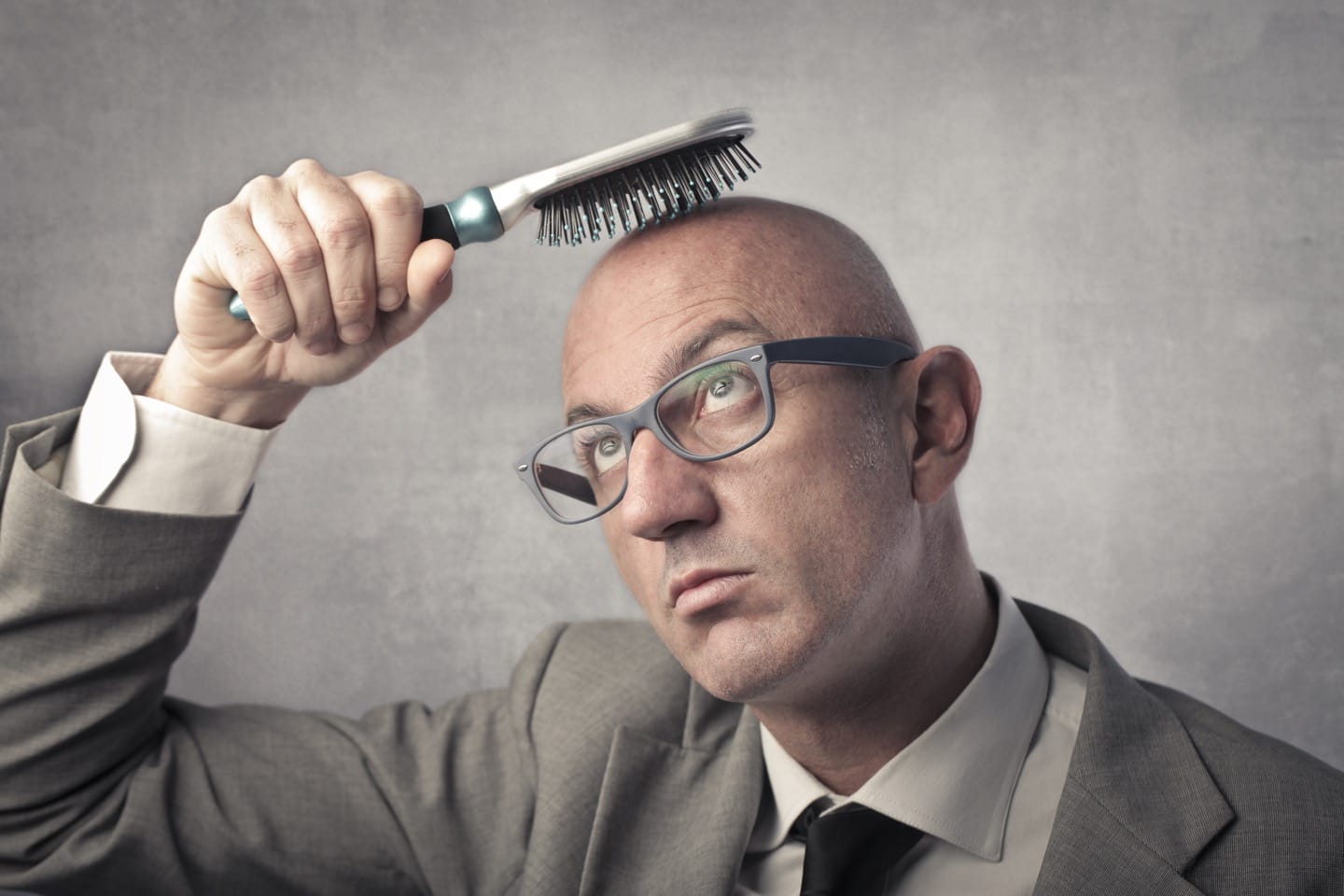Male-pattern baldness (androgenetic alopecia) is the most common type of hair loss and affects all men to some extent as they age. But for some men, this starts earlier and can result in considerable hair loss. According to Andrology Australia, significant balding affects about one in five men in their 20s, about one in three men in their 30s and 40% of men by their 40s.
Male-pattern baldness is usually inherited and can also affect women. It usually starts with a receding hairline, followed by thinning of the hair on the crown and temples. The process is gradual and only affects hair on the scalp, not elsewhere on the body.
Men with androgenetic alopecia have hair follicles which are more sensitive to dihydrotestosterone (DHT), produced in the body from the male hormone testosterone. This causes the hairs growing from the follicles to become thinner and shorter with each cycle of growth.
Male-pattern baldness isn’t a disease and doesn’t cause any other health problems. However some men find their hair loss emotionally distressing and it can be associated with a lack of self-esteem and in some cases, depression. If this is the case, asking your doctor for a referral to a psychologist to discuss your feelings may help.
While there is currently no cure for male-pattern baldness, there are a number of treatments that can slow down hair loss in some men. These include medications, hair transplants and plastic surgery. Earlier treatment is best as it is usually easier to maintain existing hair than to regrow it, so if you’re concerned about hair loss, speak to your GP about your options.
For more information:


